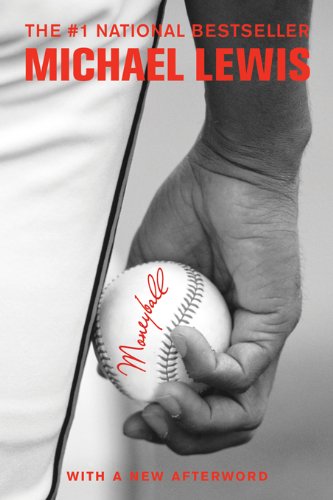

This article is an excerpt from the Shortform summary of "Moneyball" by Michael Lewis. Shortform has the world's best summaries of books you should be reading.
Like this article? Sign up for a free trial here .
Have you seen the 2011 film Moneyball? How does the film differ from the book it’s based on?
In 2003, Michael Lewis released Moneyball: The Art of Winning an Unfair Game, which is the story of the 2002 Oakland Athletics and their general manager, Billy Beane. An Academy Award-nominated film adaptation of the book was released in 2011, starring Brad Pitt as Beane and Jonah Hill as his assistant general manager.
Let’s look at the differences between Moneyball by Lewis and the film adaptation of the same name.
The Book Focuses More on Statistics
Lewis’ book Moneyball focuses on general manager Billy Beane’s statistical approach to making the 2002 Oakland Athletics baseball team (better known as “Oakland A’s”) into a winning team on a small budget. Although the A’s have many players with atypical physical attributes and unusual hitting or pitching styles, they excel in overlooked statistical categories, like on-base percentage, that were typically dismissed by baseball traditionalists. This enables Beane to get maximum efficiency from his team, earning wins at a fraction of the price paid by the rest of the league.
Lewis contends that baseball statistics such as stolen bases, runs batted in, and batting average are outdated and that Beane’s approach with on-base percentage and slugging percentage was much more accurate for the team he was working with. How Beane came up with this analytical approach and how it made his team successful in Major League Baseball takes up a big chunk of the book.
Given this, the book isn’t exactly a narrative with a beginning, middle, and end. It details the statistical approach behind the team’s success but lacks the personality that movies need. The adaptation written by Steven Zaillian and Aaron Sorkin and directed by Bennett Miller does heighten the drama behind the team’s struggle during the 2002 season but fails to provide what the essential premise of the book is. Of course, including all the numbers and statistics that Lewis does would’ve slowed down the movie and made it more of an educational documentary than a drama film.
The Movie Includes Beane’s Ex-Wife and Daughter
To dramatize the movie, the main character needs to have a personal motivation that drives him to be the best person he could be. Of course, Beane wants to build a winning team, but he also wants to be a good father to his daughter whom he shares with his ex-wife. In one scene, he takes his daughter to a guitar store to buy her a guitar, to which she plays a song for him. Later, Beane listens to a CD made by his daughter in the car. The CD begins with a message from her about his decision on whether he should stay in California but assures him that he’s a great dad.
This scene or any mention of his daughter doesn’t take place in the book, but it makes for a heartwarming and touching moment in the movie that humanizes Beane.
Billy Beane’s Assistant Changes
Jonah Hill received an Academy Award nomination for Best Supporting Actor for his role as Beane’s assistant, Peter Brand. The role solidified Hill’s range of acting and helped convince movie-goers and critics that Hill can do more than just comedy. In reality, there is no Peter Brand. The character is based partially on Paul DePodesta who was Beane’s assistant general manager since 1999. In the movie, Beane meets Peter after the Oakland A’s lost to the New York Yankees in the 2001 American League Division Series. Peter is a young Yale graduate with a new approach on how to evaluate and pick players, known as the sabermetric method. The two then team up to use this new approach to build a better team.
In the book, Billy has assembled a sabermetric-focused team in the front office, including assistant DePodesta, who had graduated from Harvard with a degree in economics and never played professional baseball himself. But why was DePodesta the only name that was changed for the movie? DePodesta claimed that he wasn’t comfortable with his name being in the movie because he felt there would be conflict involving his character that never actually happened. In addition, he liked knowing that the name change would help remind people that it was a retelling and not a documentary.
Chad Bradford’s Backstory Is Excluded
Lewis goes into great detail about the life and career of Chad Bradford, who was an undervalued player that signed with the Oakland A’s in the 2002 season. He mentions Bradford because he’s a superb example of the new approach to pitching: defense-independent pitching statistics (DIPS). Bradford excels in the DIPS categories, but Lewis mentions that his bizarre throwing style never impressed the White Sox, who failed to give him a full-time position. But Beane recognizes his style as something that could contribute to the Oakland A’s and signs him onto the team.
The movie recognizes Bradford as one of the recruits as the team was shaking things up, but doesn’t extensively go into his backstory as Lewis does. This likely is due to the limited time there is to tell the entire story in a feature film length’s time, and the movie doesn’t suffer from discarding Bradford’s story.
The Draft Isn’t Included in the Movie
Another important aspect of the book that isn’t covered in the movie is the Oakland A’s 2002 draft process. An entire chapter is dedicated to the events before and during Draft Day, which isn’t in the movie.
At the end of the 2001 season, the Oakland A’s had already lost three of their best players to richer and better teams. Already struggling financially, Beane had to be careful about who he brought on to the team. Lewis goes into detail on why Draft Day is so important, and why careful consideration must be taken. He proceeds to explain why the amateur draft is so critical to a team like the Oakland A’s, why Beane made a strict rule to not sign players fresh out of high school, and why you should look at drafting as value investing.
These aspects are certainly present in the movie, but the overall draft process isn’t important to the story. It instead includes a scene that debates science vs. scouts, in which Beane is meeting with experienced baseball scouts but is disappointed in the discussion. They debate the actual problem that they’re trying to solve but don’t go into extraneous detail that Lewis does.
Which Is Better: The Book or the Movie?
For sports fans who enjoy the science of drafting and forming a baseball team, Lewis’ book might be more enjoyable than the movie. For those who enjoy a good inspirational sports drama, the movie is perfect for sitting down and watching during baseball season. But no matter the changes, both the book and movie accurately portray the story of Beane’s hard work to push the Oakland A’s to success.

———End of Preview———
Like what you just read? Read the rest of the world's best summary of Michael Lewis's "Moneyball" at Shortform .
Here's what you'll find in our full Moneyball summary :
- How Billy Beane first flamed out as a baseball player before becoming a general manager
- The unconventional methods the Athletics used to recruit undervalued players
- How Sabermetrics influences American baseball today






